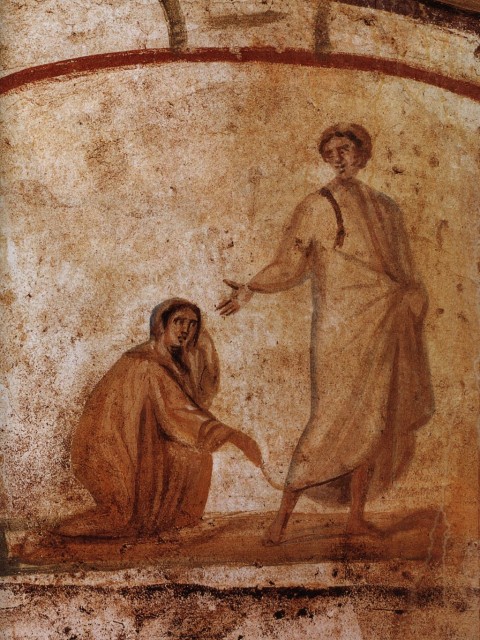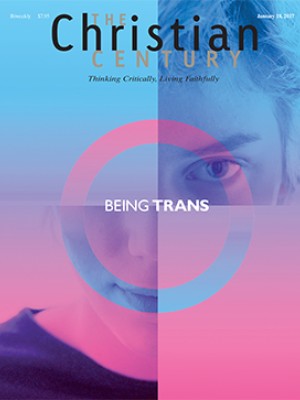
I grew up in a small Christian and Missionary Alliance congregation, where my father was the pastor. My mother took her roles as mother and pastor’s wife seriously and demonstrated sincere faithfulness to God and family. One of the ways this care manifested was in the attention she gave to grooming and dressing her three young children.
While this effort went without a hitch for my older sister and brother, it was a continual battle with me. My mother, who had been raised with a clear sense of what was proper, wanted me to wear a dress to church. This wasn’t a shallow fashion preference: she believed there was deep meaning in how you dress and comport yourself in public, and she wanted me to receive the love and respect I deserved. Despite wanting to respect my mother and demonstrate my love for her, I could not stomach wearing a dress.
Read our latest issue or browse back issues.
I still struggle to articulate the feeling I had as a child in wearing a dress. I suppose it was something akin to shame: this was not who I was. On Sunday mornings, I would often put a dress on hoping to appease my mother, but inevitably the sensation of “not right” overwhelmed me, and I would tear it off. I felt conflicted, and my mother was confounded. Why such an explosive reaction to something as simple as wearing a dress?
What I understand now but could not articulate then is that the dress was not just a piece of clothing. There were expectations that accompanied it—assumptions about what it meant to be a girl and expectations about how I should act. I knew that I was not that kind of girl, but I also knew I was not a boy. This was probably the precursor to my frustration with the gender binary. If I did not fit within these traditional categories, how many others were also struggling in this liminal space?
We need an account of gender that can open up spaces for people rather than closing them down. As a young girl in the church, I often experienced Jesus as the theological legitimization of what I could not do (for example, be a pastor, lead, etc.). But what if Jesus could do just the opposite? What if Jesus could open up expressions of gender rather than boxing them in?
When I began to study sex, gender, and masculinity in the biblical world, I found that in many ways Jesus confounded notions of gender. According to Matthew’s account of his lineage, he lacked a paternally inherited X or Y chromosome. Envisioned as the New Adam, Jesus was patterned after the androgynous first human. Furthermore, medieval theologians imagined the wound in Jesus’ side as a womb in which he held all people.
One of the most striking examples of Jesus complicating gender categories happens in his encounter with the hemorrhaging woman (Mark 5:25–29). At the beginning of this story it seems that one of the main characters is clearly male and the other is clearly female. As the story progresses, however, the gender markers of the characters become more complex. In order to understand this blurring of boundaries between Jesus and the bleeding woman, we must enter the first-century mind-set.
In the first century, the body’s vulnerability to disease was a gendered reality. Females were perceived as porous, lacking boundaries between the body and the exterior world, which left them susceptible to illness. The fact that women menstruated monthly demonstrated their inability to control their body or protect it from external forces. In short, a leaking body was a feminine body, an inferior body.
In Mark’s story, the woman who approaches Jesus in the crowd has been bleeding for 12 years, so she fits squarely into the category of feminine as she approaches Jesus. Not only is she bleeding, she is perpetually bleeding and has no control over it. Female bodies were already perceived as weaker and inferior, and this woman’s leaking, porous body would have been considered inferior even to other females.
When she touches the fringe of Jesus’ cloak, something unexpected happens. New Testament scholar Candida Moss notes that the Greek phrase normally translated as “the power went out of him” could also be translated as “the power leaked out of him.” In other words, Jesus’ body becomes leaky, porous, and permeable—like that of a woman’s.
For Jesus’ body to begin leaking when a leaky woman touches him is a blatantly feminizing act. Furthermore, it is a female who exerts power over a male body, extracting healing from him. The alignment of Jesus’ body with this feminine, bleeding body is quite scandalous.
It is easy for us to praise the woman for her bravery and miss the fact that after the healing she is terrified. She seems to know that she has transgressed gender boundaries and threatened the masculinity of Jesus’ body. But Jesus does not chastise her or reproach her for stepping outside traditional gender roles. Quite the opposite. Not only does he tell her to go in peace, but he commends her act—one that transgresses accepted gender roles—as an act of faith.
Jesus’ encounter with the bleeding woman reveals a savior who is interested in keeping things in flux, who is willing to be leaky and permeable, and who holds the possibility of all sexes and genders within his own body.
The point here is not that Jesus is male or female or effeminate. Rather, it is that his body does not fit into such categories and will not submit to them. Blurring the lines with his own body, Jesus precludes the theological justification for placing others into categories in ways that negate or ignore their own voice. We are then compelled to relate to people rather than categorize them, acknowledging their right to narrate their own identity and rejoicing in the fact that gender expression is but one of the ways we can witness the wonderful creativity of our Creator.
That’s hope for me. That’s saving. Through Jesus’ body, we receive possibility and relationship. Whether or not we’re wearing a dress.
A version of this article appears in the January 18 print edition under the title “Permeable savior.”



